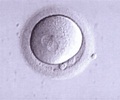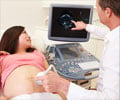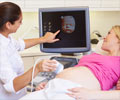Adding either tomosynthesis or ultrasound scans to standard mammograms can detect breast cancers that would have been missed in women with dense breasts.

‘Adding either tomosynthesis or ultrasound scans to standard mammograms can detect breast cancers that would have been missed in women with dense breasts.’





In over 3,000 women with dense breasts where standard mammograms had not detected any cancer, the addition of tomosynthesis or ultrasound scans picked up an extra 24 cancers. Nehmat Houssami, Professor of Public Health at the University of Sydney, Australia, representing the Italian-based trial, said that, until now, there had been no prospective trial comparing the addition of ultrasound or tomosynthesis to standard mammograms in these women.
"These findings will have immediate implications for both screening practice and for guiding new research in dense breasts," said Houssami. The findings will be published in the Journal of Clinical Oncology.
The researchers in Italy and Australia wanted to see whether the addition of ultrasound or tomosynthesis to the standard mammogram during the same visit could improve detection rates.
The Adjunct Screening with Tomosynthesis or Ultrasound in Mammography-negative Dense breasts (ASTOUND) trial has been recruiting asymptomatic women who attend for breast screening at five imaging centers in Italy and who have dense breasts (breasts defined by the Breast Imaging and Reporting and Data System (BI-RADS) as being in the two highest density categories, 3 and 4: heterogeneously or extremely dense).
Advertisement
The additional scans picked up an extra 24 breast cancers; 12 were detected by both tomosynthesis and ultrasound, one was detected only by tomosynthesis and 11 only by ultrasound.
Advertisement
The researchers, led by Dr. Alberto Tagliafico, a radiologist and Assistant Professor of Human Anatomy at the University of Genoa, Italy, also found that, although there were an additional 107 false positive recalls - where women were recalled for further investigation as a result of abnormalities showing up in the scans that, on subsequent investigation, proved to be false alarms - there were no difference in the additional false recall rate between tomosynthesis and ultrasound.
Prof Houssami said, "In this study we are comparing two additional tests to see if they can do better than standard mammograms in finding cancer in women with dense breasts; we have found that ultrasound does better than tomosynthesis, but ultrasound is a separate test, it is time-consuming and, in less experienced hands, it can lead to a lot of false alarms. However, tomosynthesis, which is a form of refined mammography, can be carried out as part of the standard 2D mammogram screen, or even instead of it. Given that tomosynthesis detected more than 50% of the additional breast cancers in these women, the implications are that it has the potential to be the primary mammography screening method without the need for an extra screening procedure."
She said that further research in other settings, as well as cost analysis studies, were needed before definitive recommendations could be made. In addition, the results would have different implications in different countries. "For example, in many countries, such as the UK and Australia, using additional screening tests for dense breasts is not recommended routinely by screening programs, but in other countries, such as the USA, where legislation mandates that women should be informed about their breast density and the availability of extra tests, then these findings will be very relevant."
"However, we need to bear in mind that we do not know whether adjunct screening improves screening efficacy and benefit beyond standard mammography, taking into account the additional false positives as well, and I anticipate that organized screening programs will want that evidence before considering making any changes. So our study does not provide all the answers on this issue but provides the first critical piece of information on how these two tests compare. If a woman is concerned that her breasts are very dense on the mammogram (or has been told her breasts are very dense and would like more testing), I can use the data from ASTOUND to discuss with her the option of having the ultrasound or the tomosynthesis screen; I would discuss with her the pros and cons of adding another test to improve sensitivity for detecting cancer, but would also point out this could have additional harms such as more false alarms."
Chair of EBCC10, Professor Fatima Cardoso, who is Director of the Breast Unit at the Champalimaud Clinical Centre, Lisbon, Portugal, said, "Although further research is required, ASTOUND is the first prospective trial comparing additional screening technologies beyond mammogram in women with dense breasts. It provides important evidence of the potential benefit of ultrasound or tomosynthesis for screening women with dense breasts. Issues of cost effectiveness must, however, be addressed before we can change current screening practices."
Source-Eurekalert















